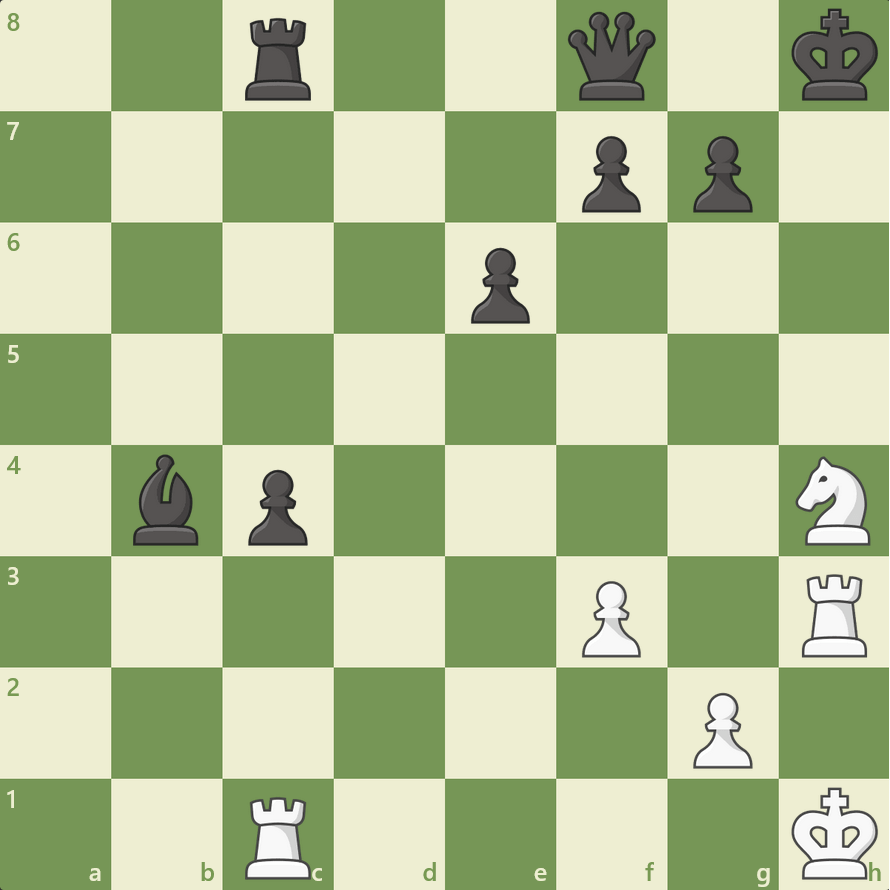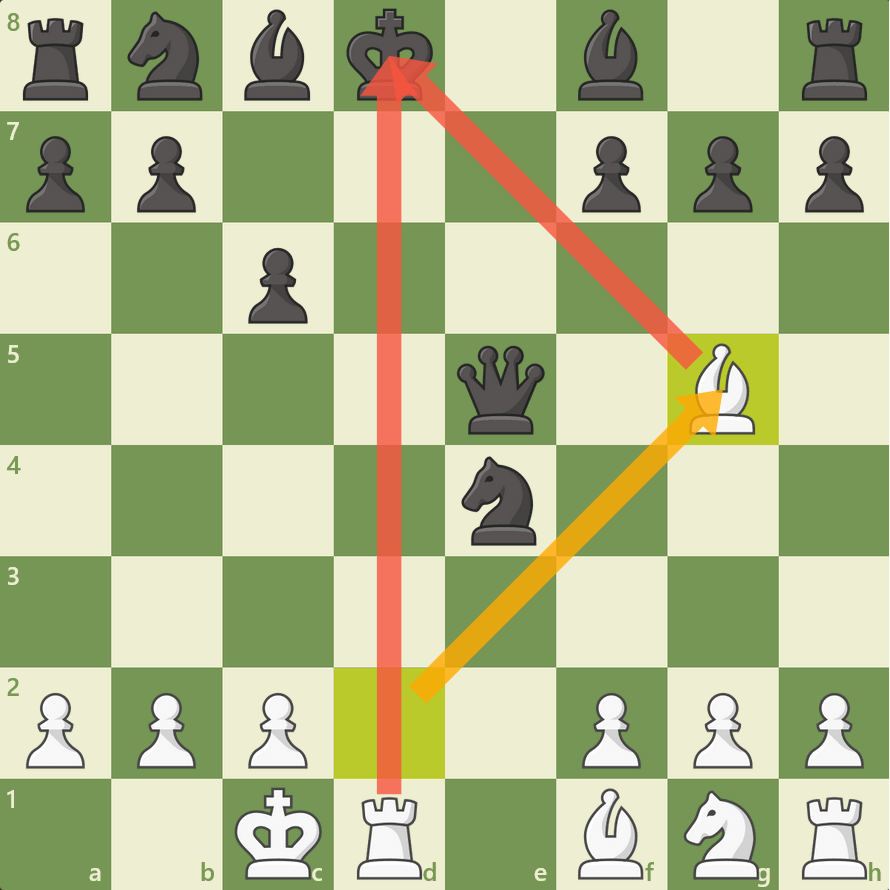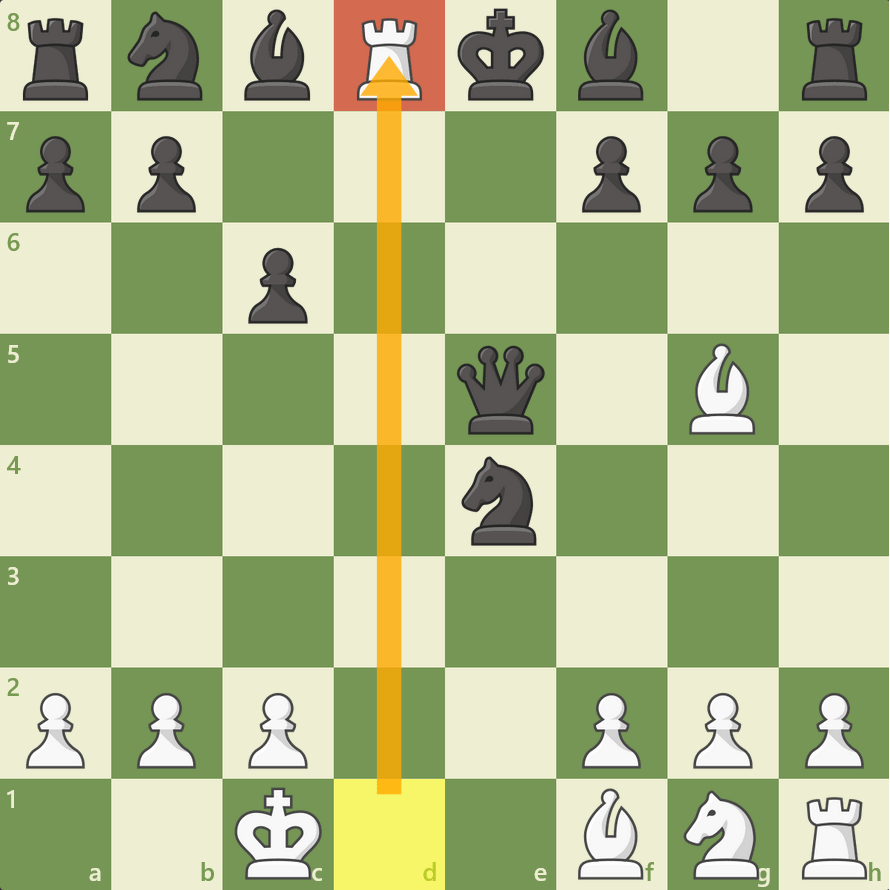
Double Check
There are many different types of checks in chess, but what is a double check? It sounds like we can create two checks in one move, but is that possible? Let's find out as we learn about this devastating check!
Here is what you need to know about double check:
What Is Double Check?
As mentioned, there are many different types of checks in chess. A double check is exactly what it sounds like: a king is put in check by two pieces with a single move. Double check almost always occurs with a discovered check or discovered attack, where one piece moves and exposes a new attack by a previously blocked piece. Let's take a look at the following position:

Black is ahead in material, but White has a double check to unleash! After Ng6+ is played, Black's king is in check by not just the knight but also White's rook!

Now that you know what a double check is, we can explain why this concept is so important.
Why Is Double Check Important?
Double checks are important because they can often lead to mating attacks or mating nets, can often win material, and force the king to move. If we take the same position we were just looking at after Ng6+, Black is forced to move their king to g8.

Please note that when a double check occurs, the checked king must move! There are only three ways to get out of any check: 1) block the check, 2) capture the piece delivering check, and 3) move the king out of check.
Since there is no possible way to capture or block both pieces putting the king in double check, the king must move. As Aaron Nimzowitsch explains, "Even the laziest king flees wildly in the face of a double check."
Even the laziest king flees wildly in the face of a double check.
— Aaron Nimzowitsch
If we look at the above position again, White could win the queen with Nxf8, but there is an even better move than winning material! White can deliver checkmate in one move with Rh8#.

We have now seen how a double check forces a king to move, how it can win material, and how it can help deliver checkmate. Let's take a look at another example. In the following example from the game Reti-Tartakower from Vienna 1910, we can see White setting up a game-winning double check from the following position.
After Black played 8... Nxe4, White sacrificed their queen with Qd8+!

Why would Reti sacrifice his queen? To set up a catastrophic double check, of course! After Qd8+, Black must capture the queen, and then Reti unleashes the powerful double check Bg5+:

As we already know, when a double check occurs, the king must move out of check. No matter where the black king moves, checkmate will follow on the next move. If Ke8, then Rd8# is played.

If Kc7 is played, then Bd8# ends the game—a memorable queen sacrifice for a double check that leads to checkmate!

Test
Now that you have seen some examples of double checks and the damage they can do, let's put your new skills to the test! Some of you may be thinking that you'll never be able to sacrifice a queen that leads to a double check that ends in mate. Well, let's take a look at the following position where Black's bishop has just captured White's bishop on f4.

Do you see a square where we can place the queen where Black would have to take it? Try to remember the queen sacrifice that Reti uses above!

Yes! Qa8+ is the right move! Black must capture this queen. Can you remember the double check into a checkmating pattern that we also saw above?

Yes! Very good! Nb6+ is a double check that also reveals a discovered check from the rook on a1! This forces the king to move to b8!

Now it is time to deliver the final blow—can you find the checkmate?

Awesome! Ra8# is checkmate! Look at that—you just used the themes from this article to sacrifice a queen to deliver a double check that forces checkmate! Fantastic job!

Conclusion
You now know what double checks are, why double checks are important, how double checks force a king to move, and how double checks can be used in mating attacks and to win material! Enjoy this knowledge in your own games, and may you deliver many double checks!







